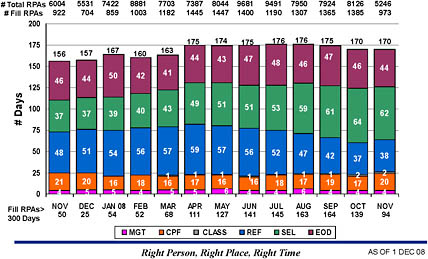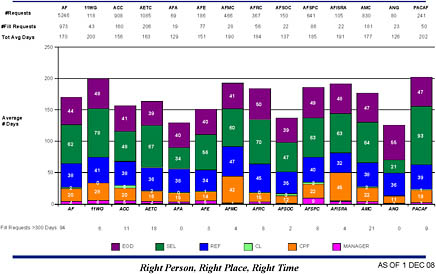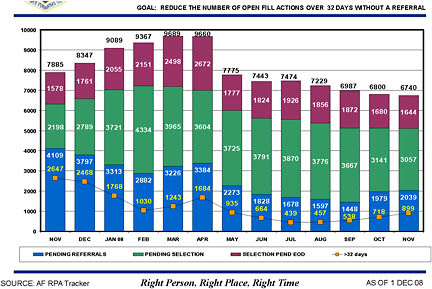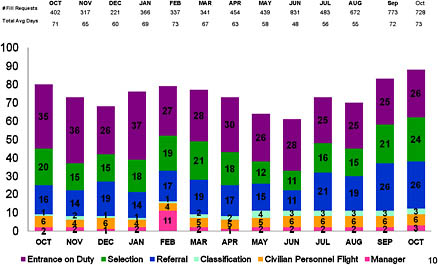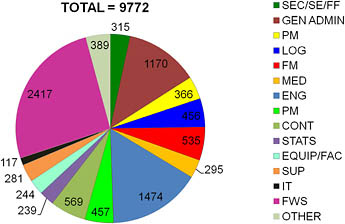Appendix E
Length of Time to Fill Civilian Positions
The civilian timeliness data supporting the committee’s findings and recommendations are shown in Figures E-1 through E-5.
-
The average number of days, Air Force wide, to fill a position by AFPC was 156 days in Nov 2007 rising to 170 days one year later. The latter figure is after AFMC servicing was returned to AFMC in the Spring of 2008. For AFMC positions still serviced by AFPC, typically at non-AFMC locations, the average time to fill a position as of Nov 2008 was 190 days. The days for AFSPC was 185 days.
-
Open fill actions at AFPC, AF wide, were 7885 in Nov 2007, rising to 9660 in April, dropping to 7775 the next month (reflecting transfer to AFMC), and ending the year period in Nov 2008 at 6740.
-
The staffing of civilian positions at the AFMC Air Logistics Centers and Wright-Patterson AFB has never moved to AFPC though it is the goal of Air Force to do so. The staffing of the remaining AFMC locations (Eglin, Hanscom, Edwards, Kirtland, and Arnold) were returned to AFMC in May of 2008. The average number of days for AFMC to fill a position was 71 days in Oct 2007 rising to 73 days one year later.
-
AFMC, as of Nov 2008 had 1474 open fills for engineering positions and 239 in the math and sciences. Though there are always open fills in the “pipeline” and these can be some of the hardest jobs in the Air Force to fill.
The committee’s analysis shows that AFMC can fill its positions in less than half the time it has taken AFPC to do so. Though the AFMC trend is upwards since June 2008, this could be explained by the additive workload from the transfer of staffing in the Spring without additive resources, as well as civilian pay funding complexities (O&M, RDT&E, and working capital funds) and related timing issues.





